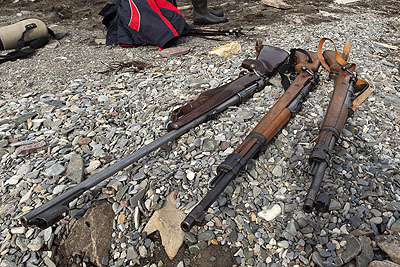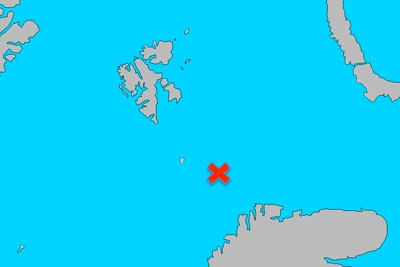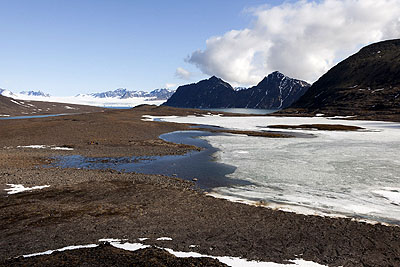-
current
recommendations- Liefdefjord
New page dedicated to one of Spitsbergen's most beautiful fjords. Background information and many photos.
- New Spitsbergen guidebook
The new edition of my Spitsbergen guidebook is out and available now!
- Liefdefjord
New page dedicated to one of Spitsbergen's most beautiful fjords. Background information and many photos.
Page Structure
-
Spitsbergen-News
- Select Month
- May 2025
- April 2025
- March 2025
- February 2025
- January 2025
- December 2024
- November 2024
- October 2024
- September 2024
- August 2024
- July 2024
- June 2024
- May 2024
- April 2024
- March 2024
- February 2024
- January 2024
- December 2023
- November 2023
- October 2023
- September 2023
- August 2023
- July 2023
- June 2023
- May 2023
- April 2023
- March 2023
- February 2023
- January 2023
- December 2022
- November 2022
- October 2022
- September 2022
- August 2022
- July 2022
- June 2022
- May 2022
- April 2022
- March 2022
- February 2022
- January 2022
- December 2021
- November 2021
- October 2021
- September 2021
- August 2021
- July 2021
- June 2021
- May 2021
- April 2021
- March 2021
- February 2021
- January 2021
- December 2020
- November 2020
- October 2020
- September 2020
- August 2020
- July 2020
- June 2020
- May 2020
- April 2020
- March 2020
- February 2020
- January 2020
- December 2019
- November 2019
- October 2019
- September 2019
- August 2019
- July 2019
- June 2019
- May 2019
- April 2019
- March 2019
- February 2019
- January 2019
- December 2018
- November 2018
- October 2018
- September 2018
- August 2018
- July 2018
- June 2018
- May 2018
- April 2018
- March 2018
- February 2018
- January 2018
- December 2017
- November 2017
- October 2017
- September 2017
- August 2017
- July 2017
- June 2017
- May 2017
- April 2017
- March 2017
- February 2017
- January 2017
- December 2016
- November 2016
- October 2016
- September 2016
- August 2016
- July 2016
- June 2016
- May 2016
- April 2016
- March 2016
- February 2016
- January 2016
- December 2015
- November 2015
- October 2015
- September 2015
- August 2015
- July 2015
- June 2015
- May 2015
- April 2015
- March 2015
- February 2015
- January 2015
- December 2014
- November 2014
- October 2014
- September 2014
- August 2014
- July 2014
- June 2014
- May 2014
- April 2014
- March 2014
- February 2014
- January 2014
- December 2013
- November 2013
- October 2013
- September 2013
- August 2013
- July 2013
- June 2013
- May 2013
- April 2013
- March 2013
- February 2013
- January 2013
- December 2012
- November 2012
- October 2012
- September 2012
- August 2012
- July 2012
- June 2012
- May 2012
- April 2012
- March 2012
- February 2012
- January 2012
- December 2011
- November 2011
- October 2011
- September 2011
- August 2011
- May 2011
- April 2011
- March 2011
- February 2011
- January 2011
- December 2010
- November 2010
- September 2010
- August 2010
- July 2010
- June 2010
- May 2010
- April 2010
- March 2010
- February 2010
- November 2009
- October 2009
- August 2009
- July 2009
- June 2009
- May 2009
- April 2009
- March 2009
- February 2009
- January 2009
- December 2008
- November 2008
- October 2008
- August 2008
- July 2008
- June 2008
- May 2008
- April 2008
- March 2008
- February 2008
- April 2000
- Select Month
-
weather information
-
Newsletter

| Guidebook: Spitsbergen-Svalbard |
Home → January, 2012
Monthly Archives: January 2012 − News & Stories
Deadly polar bear attack in Tempelfjorden
In August 2011, one person died and four other ones were seriously injured under a polar bear attack on a camp in Tempelfjord (see August 2011 news on this site for further details). The Norwegian police has now published a report on the technical condition of the safety equipment. Both the alarm fence and the rifle had failed, which contributed to the tragic outcome of the incident. Four attempts to shoot the bear failed, the bear was shot with a fifth cartridge, which had been in the rifle before, but had been ejected without firing and was then found on the ground.
According to the Norwegian police, both the rifle and the alarm fence worked when handled properly. As had been assumed before, it seems now safe to say that misusage of the alarm fence and the rifle contributed to the tragic development. Based on the information available, it is however impossible to say if it might have been possible to shoot the bear before the victim was killed. The bear was extremely aggressive and the attack went very rapidly.
Mauser-style rifles are commonly used for protection against polar bears in Spitsbergen.
East Svalbard management plan: open letter from Thor Larsen
Thor Larsen is a well-known polar bear biologist. He was research director at the Norwegian Polar Institute and is now professor emeritus. With a large number of expeditions over more than half a century, he is one of the veterans of Norwegian polar research.
Recently, Thor Larsen has expressed substantial criticism about the latest proposal of a management plan for east Svalbard, which includes large so-called scientific reference areas. It can be expected that public access to these areas will be significantly more difficult, if not impossible. Larsen critizises that the plan is kept upright although several working groups of the Sysselmannen have concluded that conflicts between tourism and science can not be identified at the time being and are not expected in the future either. The actual environmental impact of organized tourism is described as minimal by these working groups. For example, it was feared that tourist visits to walrus haulout sites might lead to disturbance. Monitoring with automatic cameras over several years has, however, not yielded any evidence to support this. According to Larsen, remaining problems such as local erosion can be solved with the implementation of site-specific guidelines wherever needed. A need for closing large areas is not seen, neither from a scientific nor from an environmental perspective, writes Larsen, also pointing out that the areas in question are all inside the nature reserves, which are already enjoying strict protection. The current regulations are well capable of protecting scientific and environmental needs, according to Larsen.
Larsen critizises that higher administrative levels keep the proposal to reserve large areas as “scientific reference areas” upright despite of this obvious lack of data which might support such a drastic step. He also points out that the scientific quality of the papers that suggest the proposal is not meeting any standards. Larsen supposes that relevant institutions now insist on their proposal because of a feared “loss of face” and reminds of a common-sense rule for mountaineering that is well-known in Norway: it is never too late to turn around.
Thor Larsen’s complete letter was published last Friday in Svalbardposten (02/2012) in Norwegian. An English translation can be downloaded here.
Northeastern Nordaustland is mostly very rocky. Nobody really knows why this area should become an exclusive playground for “science relevant to administration”.
Diesel leakage at Kapp Linné
The old radio station Isfjord Radio at Kapp Linné at the mouth of Isfjord was abandoned about 10 years ago. Today, the protected buildings are used only during the spring and summer season for touristic purposes. For the rest of the year, the houses are standing empty, mostly without supervision.
Employees of the owner SNSG (Store Norske Spitsbergen Grubekompani) have discovered a diesel leakage. It is uncertain for how long diesel could escape from the tank, but the Sysselmannen assumes that up to 100,000 or 150,000 litres may have entered the local environment. The leakage happened in a generator room.
The polar winter makes it impossible to take counteractive measures.
The houses of the former radio station Isfjord Radio at Kapp Linné.
Management plan for East Svalbard: letter to the editor of Svalbardposten
The ongoing controversy about the East Svalbard management plan has been covered repeatedly on these pages, most recently in early December, 2011. Now 17 expedition leaders have given their comments and made alternative suggestions in a letter-to-the-editor of Svalbardposten, which was published in Norwegian on last Friday (Svalbardposten 01/2012). An English translation can be downloaded here (englisch).
Many of the undersigned, including the owner of this website, have university-level education in natural sciences and are dedicated environmentalists with experience from areas, where tourism is successfully controlled, such as Antarctica.
According to the latest official proposal, Duvefjord is to be part of the controversial “Zone A”, the “scientific reference area”.
Exploration drilling in the Barents Sea
OMV Norge, the Norwegian daughter of the international oil- and gas company OMV, plans exploration drillings in the field PL 537, about 196 kilometres southeast of Bear Island, searching for hydrocarbons. The depth of the Barents Sea in this area is near 400 metres.
The Barents Sea is biologically very productive and ecologically sensitive. It is highly important for large seabird populations, marine mammals and the fishing industry.
The approximate location of PL 537 in the Barents Sea.
Source: Oilinfo.no
AECO: site-specific guidelines
AECO (Arctic expedition cruise operators) has published site-specific guidelines. These are intended to support visitors at a number of mostly frequently visited site to treat the natural and historical environment carefully. AECO member companies, which run most tourist ships that travel Spitsbergen on a regular basis, have commited themselves to the AECO guidelines. All other ships, including private boats, are invited to follow them.
The guidelines can be downloaded from AECO.
As expected, experienced expedition leaders won’t find a lot of new information in the guidelines. Tourleaders with lesser experience and private visitors will find them interesting and helpful in order to avoid or minimize any impact.
From the guidelines: Ytre Norskøya. © AECO.
Source: AECO
Spitsbergen on the UNESCO world heritage list?
In December it emerged that the Norwegian government has plans to nominate the Spitsbergen archipelago (at least partly) for the UNESCO world heritage list. Political parties and representatives of the local populations are spectical. Local politicians in Longyearbyen said they would prefer such initiatives to come from the local population, rather than the government in Oslo, which is often too far away from real life in the arctic.
It is also believed that a nomination for the UNESCO world heritage list is seen as a political exchange for a new mine, which has recently been announced to be permitted. Politicians in Longyearbyen fear that the ministry of the environment is looking for a political balance for the new mine at the possible expense of locals and tourists, who may face new restrictions which are often beneficial for Oslo politicians rather than the environment.
Controversial: a nomination for the UENSCO world heritage list. The image shows a scene from Krossfjord.
News-Listing live generated at 2025/May/03 at 00:03:38 Uhr (GMT+1)

































